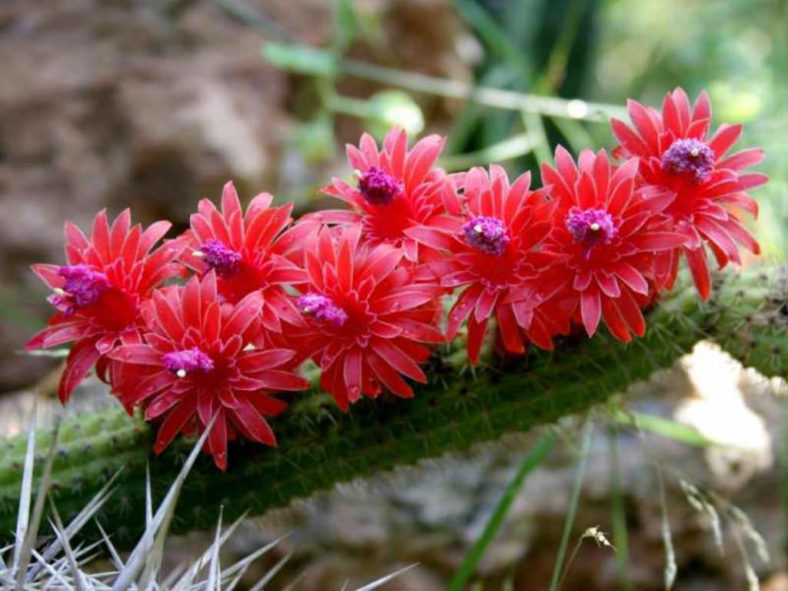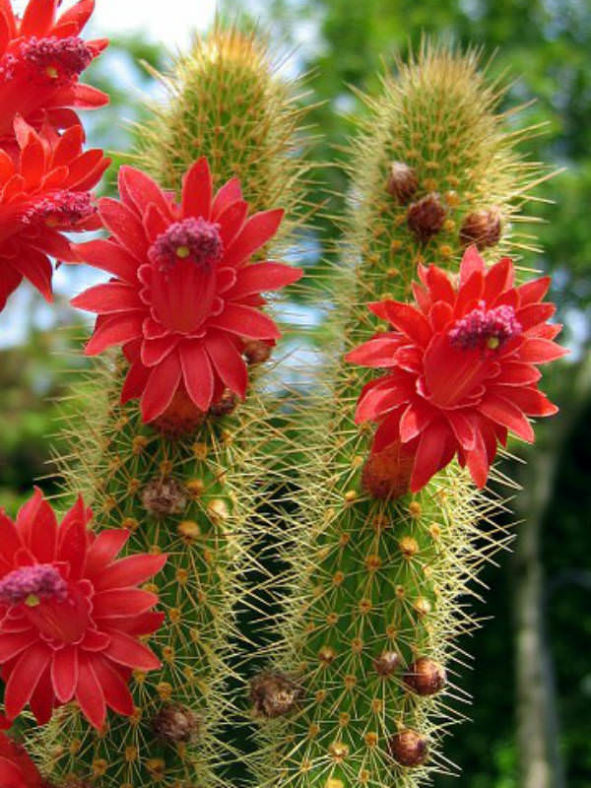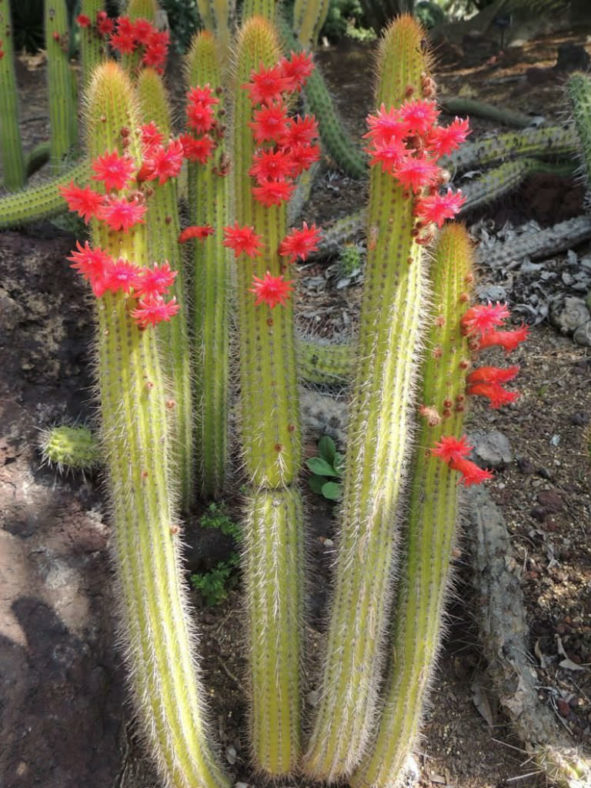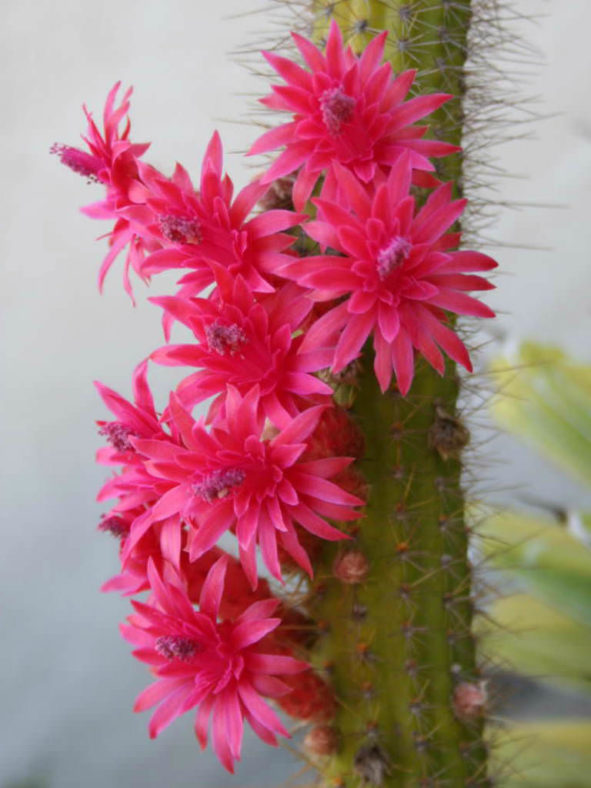Scientific Name
Cleistocactus samaipatanus (Cárdenas) D.R.Hunt
Synonym(s)
Bolivicereus samaipatanus, Borzicactus samaipatanus, Echinopsis samaipatana
Scientific Classification
Family: Cactaceae
Subfamily: Cactoideae
Tribe: Trichocereeae
Genus: Cleistocactus
Description
Cleistocactus samaipatanus is a columnar cactus with lime green stems with 14 to 17 ribs lined with clusters of pale yellow spines. It can grow up to 5 feet (1.5 m) tall. Each areole bears 13 to 22 unequal radial spines measuring up to 1.2 inches (3 cm) long.
The brilliant red to pink flowers appear in summer and can reach up to 2 inches (5 cm) in length and 1 inch (2.5 cm) in diameter. The fruits are spherical, red with white and brown wool, about 0.4 inches (1 cm) in diameter, and contain blackish-brown or black seeds.

Hardiness
USDA hardiness zone 9b to 11b: from 25 °F (−3.9 °C) to 50 °F (+10 °C).
How to Grow and Care
Choose a location that gets full sun and has well-draining soil. During the spring and summer, water your Cleistocactus when the top inch (2.5 cm) of soil dries out. Reduce watering to every five weeks during the fall if the ground dries out. In winter, keep Cleistocactus dry, or the moist ground combined with the cool temperatures and dormancy may cause the roots to rot. Fertilize Cleistocactus with a low-nitrogen fertilizer during the active growth period. A slow-release fertilizer applied in the spring will be sufficient for the year.
It is possible to propagate by cutting a small branch from a Cleistocactus and rooting it, but this inevitably leaves a disfiguring scar near the main stem's base.
See more at How to Grow and Care for Cleistocactus.
Origin
Cleistocactus samaipatanus is native to Bolivia.
Links
- Back to genus Cleistocactus
- Succupedia: Browse succulents by Scientific Name, Common Name, Genus, Family, USDA Hardiness Zone, Origin, or cacti by Genus
Photo Gallery
Click on a photo to see a larger version.



